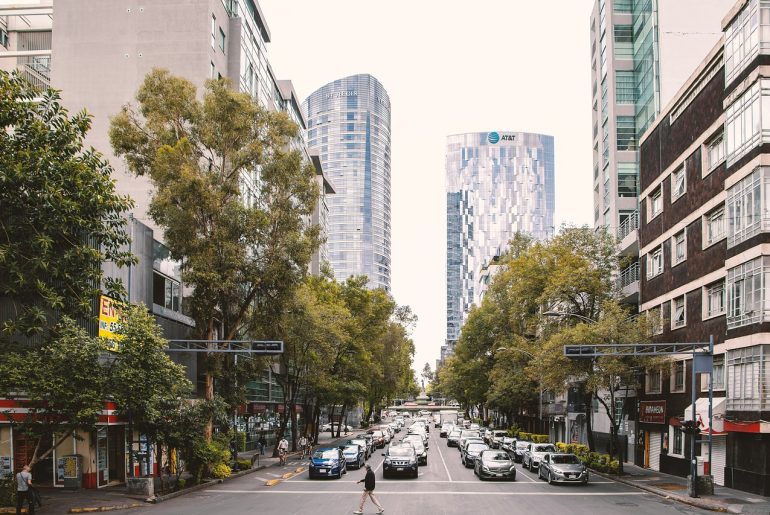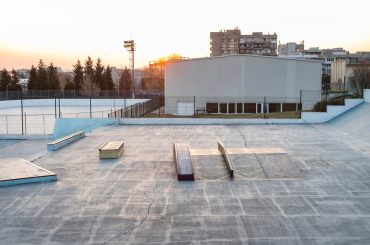Mexico’s architecture is a beautiful reflection of its diverse history. It combines indigenous traditions with European influences, creating stunning structures like Mayan ruins and colonial cities. By using local materials and blending nature, Mexican architecture seamlessly integrates with its surroundings. It represents the country’s cultural fusion, merging pre-Columbian civilizations with Spanish colonisation. This historical significance is conveyed through intricate designs and craftsmanship. Exploring Mexican architecture gives us a glimpse into the past while celebrating the country’s cultural diversity.

Pre-Hispanic Architecture: Ancient Mayan and Aztec structures
Pre-Hispanic Architecture, specifically Mayan and Aztec structures, highlights the impressive engineering and artistic skills of these civilizations. The Mayans’ Pyramid of Kukulcan at Chichen Itza showcased their knowledge of astronomy, while their intricate stone masonry and vibrant murals revealed their artistic finesse. Similarly, the Aztec Templo Mayor in Tenochtitlan featured multi-layered construction and elaborate drainage systems. Both cultures used architecture to reinforce their cosmology and reflect societal hierarchies. The enduring legacy of pre-Hispanic architecture is a testament to the ingenuity and cultural richness of the Mayans and Aztecs.
Colonial Architecture: Influence of Spanish colonization on Mexican buildings

Spanish colonization in Mexico led to the emergence of Colonial Architecture, a unique style blending European and indigenous design. With strong influences from Gothic, Renaissance, and Baroque architecture, Spanish colonizers incorporated local materials and techniques, resulting in sturdy facades built with adobe, brick, and stone. Colorful ceramic tiles, intricate carvings, and delicate ironwork adorned buildings, especially in cities like Puebla and Oaxaca. This architectural legacy symbolizes Mexico’s historical fusion of cultures and continues to attract visitors worldwide.
Baroque and Neoclassical Styles: Ornate churches and government buildings
Baroque and Neoclassical styles are significant art movements. Baroque, popular in 17th-century Europe, featured extravagant details, vibrant colours, and intricate ornamentation in churches to create awe and grandeur. Neoclassical, emerging in the late 18th century, reacted against excessive ornamentation, drawing inspiration from Greek and Roman architecture. It promoted simplicity, symmetry, and clean lines in government buildings to convey democratic ideals and inspire order and stability. These styles reflect their respective historical contexts and serve distinct purposes in religious and governmental domains.
UNESCO World Heritage Sites: Must-visit architectural wonders in Mexico
Mexico has various UNESCO World Heritage sites, displaying a diverse architectural heritage. One such site is Teotihuacan, Which features Both The Pyramid of the Sun as well as the Pyramid of the Moon.,the pre-Columbian civilization truly highlights their exceptional engineering abilities. Mexico City’s historic centre combines Spanish colonial and indigenous styles and features stunning cathedrals and vibrant neighbourhoods like Coyoacán. Chichen Itza, an ancient Mayan city, is renowned for the impressive El Castillo pyramid temple. These sites not only highlight Mexico’s exceptional architecture but also offer insights into its rich cultural history and contributions to Latin American civilization.

Traditional Materials and Techniques: Adobe, Talavera, and more
Traditional materials and techniques such as Adobe and Talavera highlight the cultural heritage of specific regions. Adobe, made from sand, clay, water, and organic matter, is a durable material known for its thermal properties, providing insulation and seismic resistance. Talavera pottery, originating from Mexico, showcases intricate hand-painted designs using high-quality ceramics. By incorporating these traditional materials and techniques, not only is historical heritage preserved, but sustainable practices that have withstood time are also maintained, showcasing authenticity and cultural pride.
Architectural Tours and Experiences: How to explore Mexican architecture firsthand
Architectural tours in Mexico offer a unique opportunity to explore the country’s diverse architectural styles and cultural heritage. From ancient ruins to colonial buildings and modern designs, Mexico boasts a remarkable mix of architectural wonders. To fully appreciate these structures, it is recommended to engage with professional guides who have extensive knowledge of Mexican architectural history, indigenous traditions, construction techniques, and influential architects. They can provide valuable insights into iconic sites and highlight the influence of cultural contexts on design choices. These tours also showcase the efforts to preserve historical structures amidst rapid urban development. Visitors can admire well-known landmarks and hidden gems with expert guidance, gaining a deeper understanding of Mexican architecture beyond its aesthetic appeal.
Conclusion
Mexican architecture is a unique blend of indigenous traditions and European influences that reflects the country’s rich cultural heritage. It is characterized by vibrant colours, intricate details, and diverse styles that showcase the region’s history, religion, and socio-political climate. Preservation efforts by the government and local communities highlight the importance of this architectural treasure. Famous architects like Luis Barragán have made significant contributions, incorporating innovative ideas on space, light, and nature. Celebrating Mexican architecture acknowledges its beauty and pays tribute to the centuries of craftsmanship and ingenuity that have shaped it.






